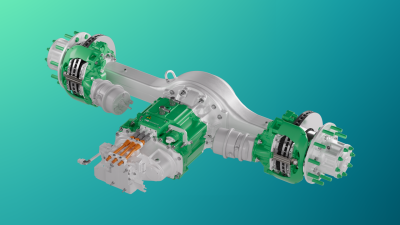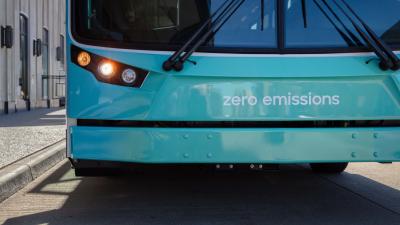Electrolyzers
Large-scale electrolysis and its role in global decarbonization
Decarbonizing the global economy is one of the most important tasks of the 21st century. But it is incredibly complex – involving a mosaic of constantly evolving technologies, stakeholders, regulations and investments. Reaching net zero by 2050 requires a lot more than individual or company-level change. Large-scale infrastructure changes that power almost every aspect of daily life are also needed.
Green hydrogen produced through large-scale electrolysis using renewable sources is vital to the global decarbonization puzzle. The rising interest in developing and deploying green hydrogen solutions from businesses, public bodies, and investors is driving significant innovation in the clean technology sector.
But what is electrolysis – and why is its application on a large scale so crucial for the emerging hydrogen economy?
Understanding electrolysis
Electrolysis is an efficient electrochemical reaction that uses electricity to break down water (H2O) into its fundamental elements: hydrogen (H2) and oxygen (O). Electrolysis is considered completely “green” - meaning the process doesn’t emit greenhouse gases (GHGs) - when the electricity used to split the water comes from renewable sources such as solar, hydro or wind energy. In turn, the hydrogen produced is classified as “green” as it emits no GHGs when used as a fuel or power source.
Other methods of hydrogen production, such as biomass gasification, natural gas reforming and thermochemical water splitting, are all proven and mature methods, but they each come with harsher environmental impacts related to GHGs. Because green electrolysis is a zero-emissions process, large-scale electrolysis has rapidly risen in popularity as a path to decarbonization.
Large-scale electrolysis
Large-scale refers to the level of power input an electrolyzer system can consume. Industry often classifies a 1-megawatt (MW) system as small-scale versus a 20MW to 150MW range for a large-scale system. This is based on the systems in operation in the world, with the world’s largest PEM electrolyzer system currently in operation being powered by Accelera™ by Cummins in Bécancour, Quebec, Canada. At 20MW, the system is comprised of Accelera HyLYZER® PEM electrolyzers and can produce over 3,000 tons of hydrogen annually using clean hydropower.
Large electrolysis can accelerate the adoption of affordable zero-emission hydrogen, and it is also considered an attractive solution for excess renewable energy storage. When excess renewable energy is produced (e.g., the sun is shining, but the grid demand for electricity is lower than the supply), that energy can be fed into an electrolyzer and stored as hydrogen for long periods of time. Once the energy is needed, the hydrogen can be utilized by a fuel cell, in which it goes through reverse electrolysis and turns into usable electricity.
Accelera is developing an electrolyzer system with higher hydrogen output stacks and 25MW modules, making it suitable for even larger electrolyzer projects (>200MW). This technology will be critical for larger projects and will be manufactured in our US-based electrolyzer manufacturing facility in Fridley, Minnesota, and in our new electrolyzer manufacturing plant facility in Guadalajara, Castilla-La Mancha, Spain.
The emerging hydrogen economy
According to the Hydrogen Council, there are currently over 1,000 hydrogen projects underway around the world. By 2030, just under 800 of these will be fully or partially deployed – contributing to a global supply of 38 million metric tons of green hydrogen per year. This is a significant rise from the less than 1 million tons produced in 2023. The momentum is moving in the right direction, but the number of investments and projects relating to zero-emissions hydrogen will have to rise significantly to meet the demands of a net zero economy.
Today, most of the world’s hydrogen is used in industry processes such as oil refining, ammonia production, methanol production and steel production. Most of this hydrogen is produced using fossil fuels, creating a huge opportunity to reduce global emissions by switching to electrolysis using renewable electricity. In the transport sector, hydrogen fuel vehicles will become more viable as infrastructure is created and the cost of the technology continues to fall. Hydrogen-based fuels could also offer the shipping and aviation sectors more choices when it comes to low-carbon alternatives.
The viability of zero-emissions hydrogen for fuel cell vehicles and industrial processes still hinges on cost. Economically, no one is ready to fully shift today because it is still more expensive than hydrogen produced through other means due to the higher cost of new technology, new renewable capacity, and distribution. However, more and more governments are offering increasing incentives and subsidies to help make the shift to green hydrogen more achievable by 2030.
Accelera is actively investing in product capacity to achieve very large-scale hydrogen production with high modularity and with the smallest footprint in the market. The concept is to enable hydrogen production with flexibility to achieve lower operation costs and lower the cost of hydrogen per kg as the grid decarbonizes. In other words, providing an optimum-size electrolyzer that can adjust its capacity according to the available clean energy load factor and increase its efficiency by producing more hydrogen.
Driving structural change
There are, however, some significant barriers to a global hydrogen economy. Aside from the current cost of producing clean hydrogen, perhaps the biggest challenge is the scale of infrastructure required – building a network to get hydrogen from where it is generated to where it will be used.
One option is to create a hydrogen pipeline network. If the existing pipeline can be repurposed, this could be one of the lowest-cost distribution solutions. Existing natural gas pipelines and associated infrastructure in most countries could be adapted to be used for hydrogen, but making that transition would be complex and still require significant investment and time.
Another option is to truck the hydrogen from where it is generated to where it’s needed. To keep the process emissions-free, those distribution trucks would also need to be zero-emissions vehicles and would require their own fueling infrastructure to transport hydrogen cross country, perpetuating the chicken-and-egg scenario.
Luckily, we are seeing an emerging network of public and private partnerships looking to provide solutions to this complex problem. But there will need to be much more collaboration between governments that import and export energy, renewable electricity providers, industrial gas manufacturers, electricity and gas utilities, automobile manufacturers, oil and gas corporations, major engineering companies, and cities. Investments in hydrogen have the potential to stimulate new technological and industrial growth globally, leading to the creation of skilled jobs.
Why is large-scale electrolysis important?
Scaling up electrolysis projects and capabilities is important for several reasons:
Decreasing the cost of hydrogen
Zero-emissions hydrogen is expensive today, and its cost needs to come down to enable broad adoption. Thanks to economies of scale and innovations in technology, as production cost decreases, so does the cost for customers, paving the way for adoption across more markets and regions. As the use of hydrogen becomes more widespread, infrastructure will follow suit.
Expanding decarbonization
Affordable hydrogen will allow other sectors, such as medium- and long-haul transport and industrial processes, to decarbonize. This will facilitate a wider adoption of fuel cell-powered vehicles and lower the emissions levels of hard-to-abate sectors like utilities, steel, ammonia and methanol production, and seasonal power storage.
Achieving global climate goals
Following the Paris Climate Agreement in 2015, many countries and businesses have established ambitious climate targets in efforts to transform the global energy mix and keep global warming below 1.5 degrees C. The production of zero-emissions hydrogen plays a key role in that transformation.
In efforts to lower the cost of production and establish a holistic shift – from policy and regulation to investments, research and development - more electrolyzer projects are getting the green light around the world, and businesses are seeking viable solutions to decarbonize. According to the Hydrogen Council, over 1,000 hydrogen project proposals were announced globally in 2023, with 795 planning for full or partial deployment by 2030. And there was USD 32 billion in direct investments announced through 2030.
With projects like Bécancour, the 35MW electrolyzer project with Linde and the 90MW electrolyzer system project with Varennes Carbon Recycling, Accelera™ is committed to helping accelerate the shift to a zero-emissions hydrogen economy and supporting global decarbonization efforts.

